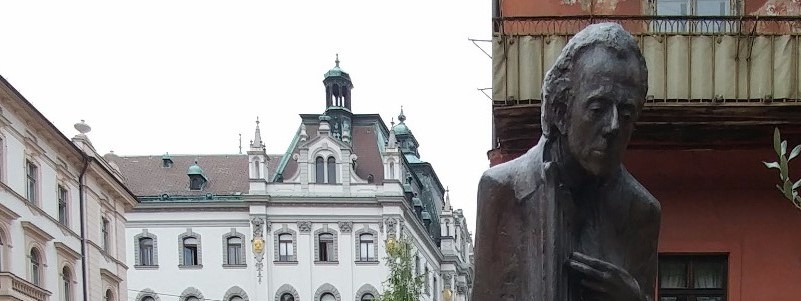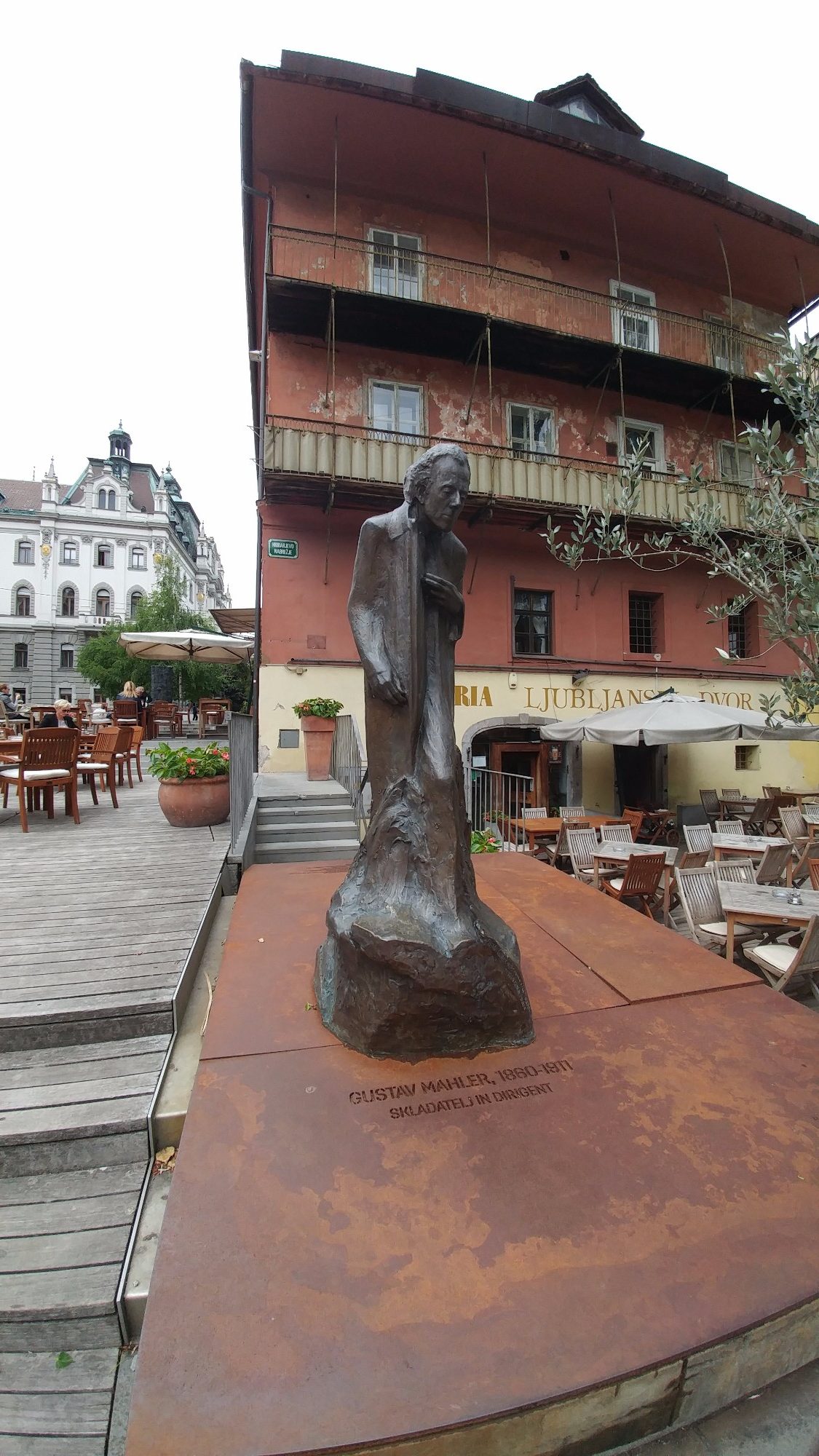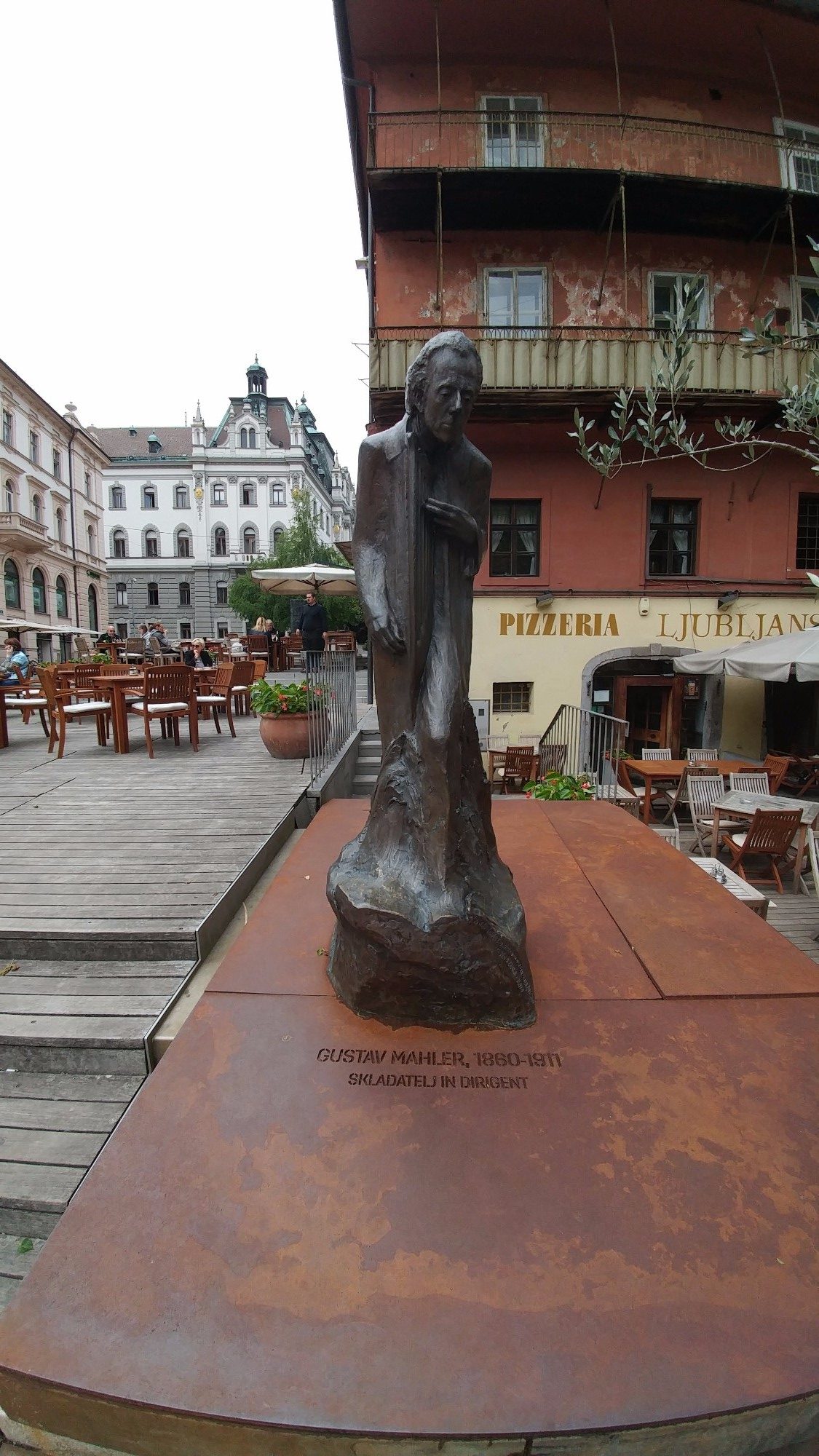The memorial statue of Gustav Mahler is one of the three representations of the composer in Ljubljana by Boris Kunaver. It was erected in 2011, to mark the jubilee concert season (2010/2011) entitled Mahler in Ljubljana, which commemorated the anniversaries of the composer’s birth and death (1860–1911). The visual identity of the Mahler monument in Dvorni trg Square bears the title The Song of the Earth/The Farewell and depicts the broken down composer undergoing ‘complete inner turmoil’ and holding an unidentifiable instrument in his hands. With this instrument, the sculptor echoes the despairing comments on the sketched manuscript of Mahler’s last and unfinished symphony, thus aiming to pose a riddle to the beholder, and placing the composer in the domain of the unattainable.
The inauguration of the monument completed the musical focus on Mahler’s work by the Festival Ljubljana throughout its concert season. A special highlight of the Festival was the performance of Mahler’s Symphony No. 8, frequently called The Symphony of a Thousand, performed in Kongresni trg Square by the Slovenian and Zagreb Philharmonic Orchestras. Under the baton of the distinguished conductor Valery Gergiev, the performance included as many as 21 choirs from Slovenia and Croatia.
Gustav Mahler
Regarded as one of the leading late-Romantic composers, Gustav Mahler’s (1860–1911) Symphony No. 1 from 1889 heralded the outburst of a stylistic plurality at the turn of the nineteenth century (fin de siècle). Embracing innovation in terms of compositional technique, composers nevertheless remained faithful to the aesthetic principles of Romanticism, which cultivated as its core an ideal of idiosyncratic, subjective expression. This tendency is reflected in Mahler’s monumental symphonies and lieder, which principally served as a vehicle for the composer’s personal worldview conveyed from his internal impulses.
During his lifetime, Mahler’s works were neither universally appreciated nor widely performed. He made an indelible impression on the musical landscape, first as the conductor and artistic director of the Vienna State Opera. The influences of this tyrannically disciplined, large-scale conductor, who envisioned innovative interpretations from his retouched scores by Beethoven, Mozart and Schumann, set the standards of music interpretation for contemporary conductors. Mahler’s demands introduced reforms into music institutions that have today entered the established canon of concert practice: reverential silence and dimmed lighting in the theatre during performances.
It all began in Ljubljana, a city in which Mahler most probably arrived on the initiative of his friend Anton Krisper, a native of the city. In the 1881/1882 season, the talented, 20-year-old Mahler conducted operatic and orchestral performances at the Ljubljana Provincial Theatre, thus raising the standards of music delivery and making a name for himself at his first major musical hub, an initiation that paved the way for his international career. The historical relevance of his compositions, the groundbreaking dimension of his music, was universally recognised in retrospect, as late as in the twentieth century, through the efforts and advocacy of the legendary composer Leonard Bernstein.
Maia Juvanc


